Fixing the Global Food System Through Sustainable Agriculture, Production, and Consumption in the Asia-Pacific Region
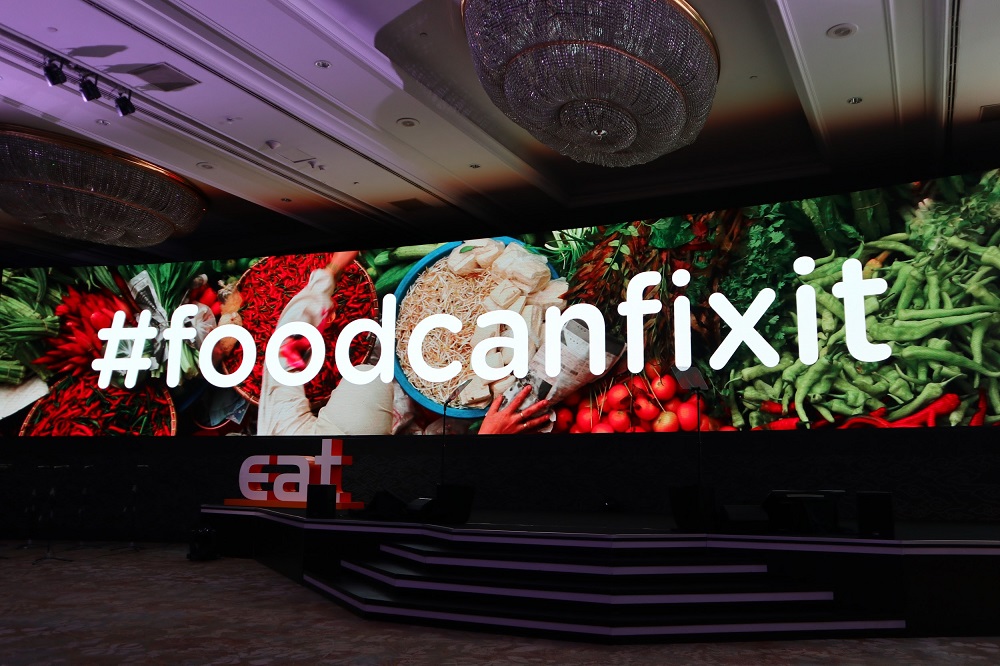
In partnership with the Indonesian Ministry of Health, the EAT Foundation hosted the first EAT Asia Pacific Food Forum this 2017, with the goal of creating a more sustainable global food system as a path towards sustainable global development.
Jakarta, Indonesia (October 30 to 31, 2017) -- “How much does it cost to fix a problem before it happens versus trying to fix it after it happens?”
This question, raised by Dr. Jason Clay, Senior Vice President for Markets and Food of WWF, set the tone for the kind of thinking required from the delegates of the EAT Asia Pacific Food Forum 2017, a first-of-its-kind gathering in Asia Pacific, where international and regional politicians, scientists, business executives, innovators, activists, and chefs collaborated to address food-related health and environmental challenges in the region.
The forum was opened by Dr. Gunhild A. Stordalen, Founder and President of EAT Foundation, where she stressed the need for a food system that is healthy, fair, sustainable, and inclusive in order to create hundreds of millions of jobs and generate more than 2 trillion dollar in new economic value by 2030. “We’re starting to understand the full complexity of food. A growing number of scientists agree that a sustainable food system, including diets developed from its implementation, is better for both people and planet. Of course there will be regional variations, applications, and trade-offs, but there is robust scientific evidence showing that this cannot only decrease health and environmental problems but even prevent them.”
The EAT Food Forum, which was started in Stockholm four years ago, has become the leading global arena for those seeking to transform the world’s food system - leaders from all over the world representing different sectors and with diverse backgrounds - to come together to provide insights into the latest research, share best policy and industry practices, explore new trends, present innovative ideas, and discuss measures on how we, as a planet, can get to our goals on sustainable consumption, production, and food security. “We need more integrated knowledge on the links between food, planet, and health. We need bold politicians, collaborating across ministries to develop comprehensive policies linking food production and consumption. We need the private sector, from the multinationals to local entrepreneurs, to create new product, services, and sustainable business models. We need chefs to create tasty dishes, making the right food irresistible. And civil society needs to hold us accountable for our words and actions.”
Stressing the need for strong partnerships, Dr. Stordalen ended with a perfect analogy between food and the power of working together. “We believe the secret to success is much like the magic of food itself - extraordinary things happen when people are gathered around a table.”
The Politics of Sustainable Food
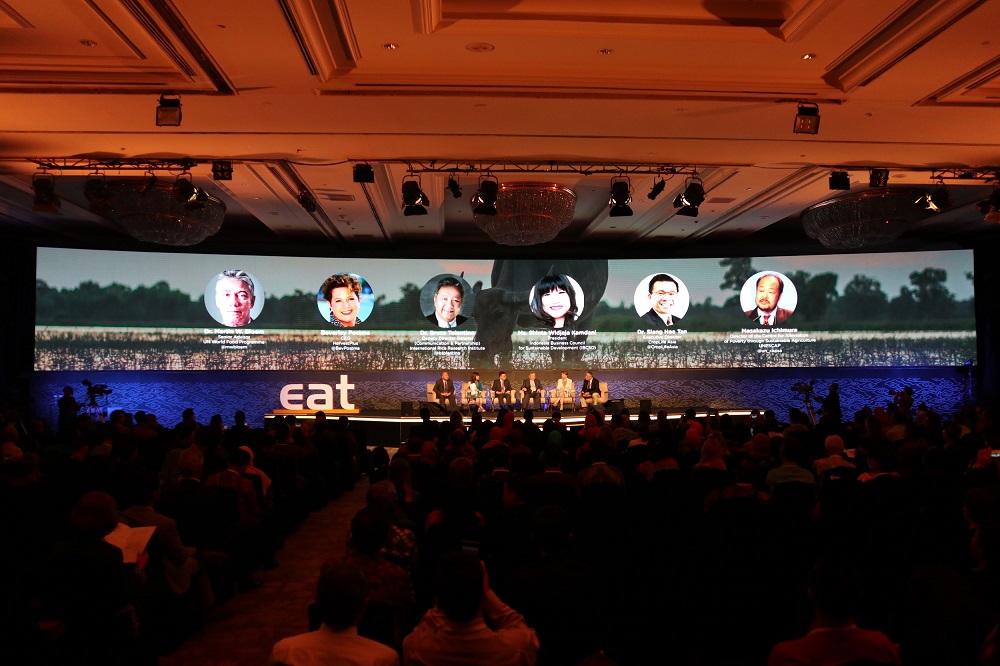
According to RaboResearch, the Asia-Pacific region accounts for 31% of total global food and agricultural import and 19% of total global food and agricultural export. As it is, food and agriculture are indispensable components and drivers of development in the region, which is why there is a need to ensure sustainability throughout the supply chain. The challenge, especially for government, is very clear, as succinctly stated by Dr. Bruce Tolentino, Deputy Director General for Communication and Partnerships of the International Rice Research Institute (IRRI) - we need to produce a lot more food for a lot more people using a lot less land and water. “In this forum we are actually bringing together many ministries which oftentimes do not work with each other, like Agriculture and Health, or Environment and Commerce, even Finance. That’s an important way of getting a government to look at food problems together and work on it together,” he says.
In fact, according to Shinta Widjaja Kamdani, President of the Indonesia Business Council for Sustainable Development (IBCSD), the time is ripe for governments all over the world to continue strengthening partnerships with the different sectors of society, mainly through the enactment of appropriate policies and the creation of the right mechanisms in order to make sustainable consumption and production work. “When we talk about the government, the government has its plan, but the plan sometimes is not aligned with what’s really needed in reality. This is why we need an innovative supply chain - working with both producers and consumers - in order to make sustainability a part of those plans. A big part of making sustainability work is by having incentives, and the government should be making sure that the right policies are in place in order for these incentives to be.”
Highly unsustainable food systems can lead to catastrophic outcomes. At the most basic level, farming and food systems have been reducing the natural and social capital of our planet without taking proper account of long-term impacts, either on the environment or the health of future generations. His Royal Highness Charles, the Prince of Wales believes that now is the time for governments to bring about a fundamental transformation in our food systems if we are to avoid the consequences of irreversible climate change. “Making the necessary changes would require collaboration at many levels and arguably, some of the most important leadership and action will need to come from Southeast Asia, where changing demographics and thriving economies are putting particular pressure on natural resources, increasing the risk of water scarcity, biodiversity loss, air pollution, and climate change.”
Business Has Gotten the Memo
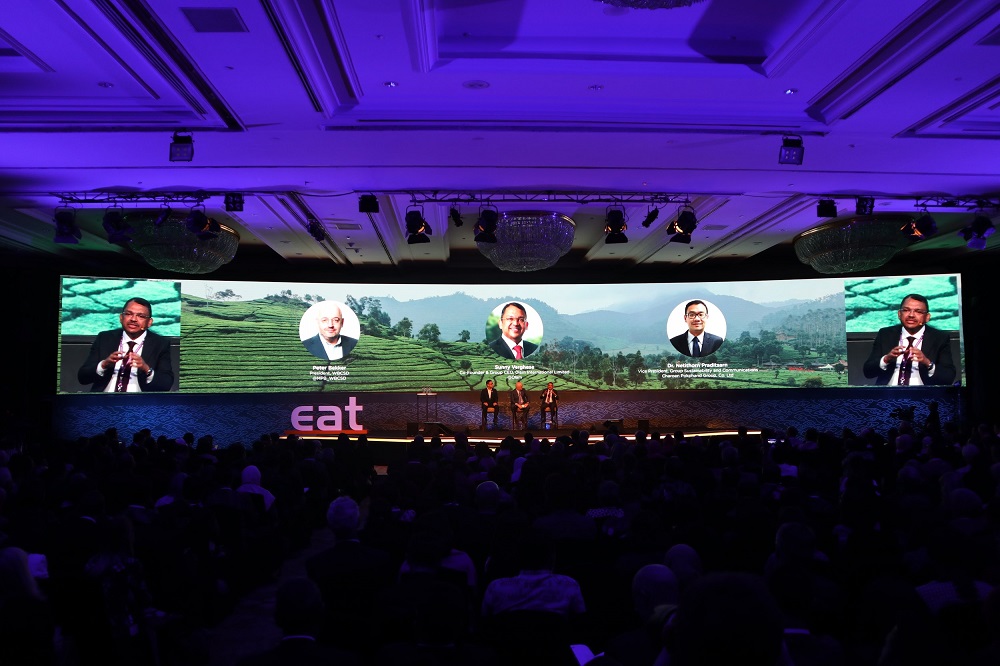
Mr. Peter Bakker, President of the World Business Council for Sustainable Development, candidly expressed this sentiment to a crowd full of business executives from all over the world. It seemed that the light-hearted proclamation was shared by almost everyone from the private sector. “We know that the food system is broken and we have sat in many meetings, with WWF’s Jason Clay and others, where the challenges have been explained to us. Why aren’t we able to feed all people in the world? What are we gonna do about obesity? And how do we take care of small hold farmers of which so many don’t make enough money to live a decent life? We need solutions at scale, that’s precisely where business comes in. Business can innovate, business can drive scale, but business must build the right incentives.”
Integrating sustainable production practices into businesses, especially in bigger ones, can be extremely complex and difficult, but it can be done. Companies like Olam International have been very successful in applying these practices in their operations, though admittedly, it took great time and effort to really implement sustainability in a holistic manner. “As a company, our goal is to produce enough food in terms of availability, accessibility, and affordability. But on top of this, can we produce food in terms of nutrition adequacy? We want to produce the right kind of food, and we want to produce this food sustainably,” says Sunny Verghese, Co-Founder and CEO of Olam International. “Working with a network of farmers is very important because we want food traceability. When consumers buy our products, we will be able to tell you what the carbon footprint is, what the water footprint is, what the waste footprint is. We can also give you information on the farmer you bought this from, where he is located, how our business was able to help transform his production capabilities through microfinancing and trainings on good agricultural practices. Businesses should be able to link markets to consumers within the supply chain, and through co-creation of solutions, we will be able to produce the right kind of food on a sustainable basis.”
While the business sector is excited about the economic opportunities that come with the investment on sustainable food systems, they admit that they would not be able to affect transformational system change alone. “We need four levels of changes. The first is to change individually as people and countries. The second way is to change our companies, and therefore mapping out our carbon footprints. We need to make public our commitments and transparently disclose these footprints, as well as our reduction targets so we can lessen the effects of these footprints on the environment. Third is sectoral change. If one person changes and one company changes, we still won’t be able to change the system, so we need the whole sector to change. In any business industry, no individual company can produce sustainable food with the right quality and in enough quantity to feed the world’s growing population. The last change that we need is in government policy. Policy frameworks should be put in place, for example in terms of pricing, if we want to change consumer behavior. When all of these four things are together - from the public sector, the private sector, and civil society - everybody coming together, that is the only way business can really be strong enough to affect change in the food system,” says Verghese.
People Power: The Importance of Consumer Choice and Behavior
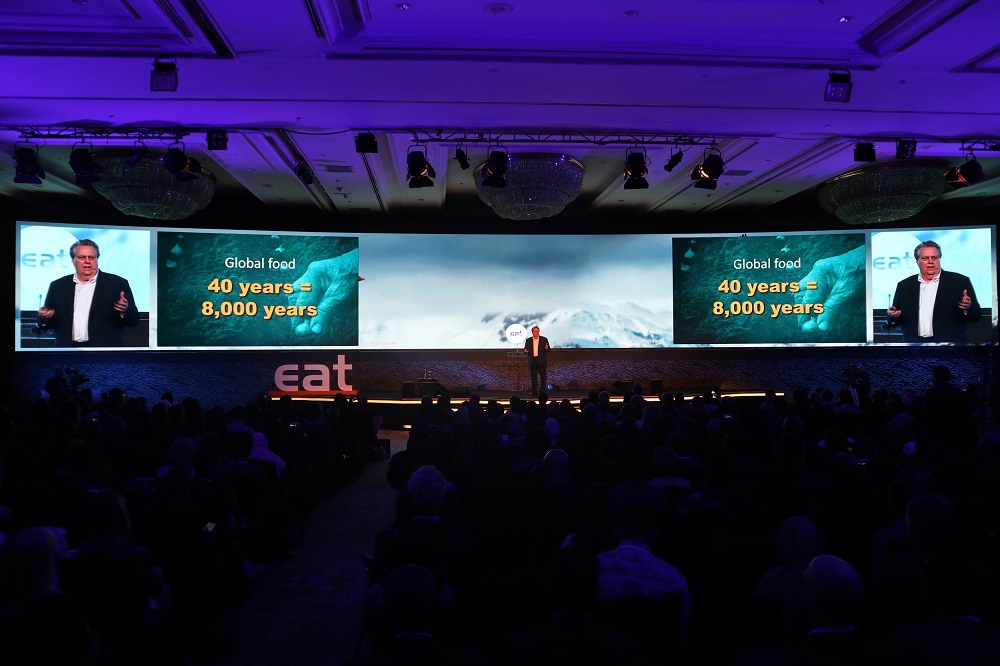
“Are you willing to pay more for what will save the world?”
We live in a moment of time with exceptional opportunity and rapid transition. People are moving to cities, and cities have grown to become global engines of economies. Societies are becoming more prosperous, people are getting richer - all at the cost of the environment. Lifestyles are becoming more unsustainable, not just in terms of food consumption and production, and we are carelessly destroying the world’s ecosystems, jeopardizing the livelihoods of future generations. Consumer choice and behavior have never been so crucial.
According to WWF’s Dr. Jason Clay, by 2050, the average consumer globally will have 2.9x as much income, and they are going to double the amount of food that they buy, resulting to a total of 18 billion units of consumption. Development is driving the speed and scale of change, and if this trend is not managed properly, our consumption and production practices will exceed the capacity of one planet. “We’re basically consuming more than what we can produce,” says Joel Palma, President and CEO of WWF-Philippines, echoing the sentiment of his colleague. “We all know that we only have one planet, but right now we are consuming 1.7 planets. If I’m a business and I am running on a deficit, I would try to look at the problem and solve it from an economic point of view. But from a natural resources point of view, we’re really running on a deficit which cannot be replenished, and sometimes food production becomes the culprit itself as 70% of natural resource depletion is brought by food production, and we waste 30% of the food that we produce.”
The effect that their food choices have on the environment is something that consumers have yet to grasp. Unlike climate change, the amount of consumerism “wake-up calls” has been insufficient, at least not yet enough for consumers to realize that the way they consume and live their lives has a critical impact on the global food sustainability framework. “So far we have been too focused on the production side, but what about the consumption side?”, argues Dr. Netithorn Pradisarn, Vice President for Group Sustainability and Communications of Charoen Pokphand Group, Co. Ltd. “Little do consumers know about the critical change that we need in our behavior in order to create a significant impact on the sustainability of food consumption and production. That as we go about our breakfast everyday, do we have that level of awareness, wherein we know that our food choice in that moment would affect how businesses react to the issue of sustainability? When we go to supermarkets, do we make that informed choice on which products we should take home in order to support sustainable consumption and production? And lastly, are we willing to pay 50 cents more for the product that can potentially save the planet?”.
The consumer’s eventual choice is determined by knowledge, preference, purchasing power, and convenience, and the hope is that these all lead him to choosing quality, nutritious, sustainably-grown food. While these factors will definitely affect how governments and businesses comply to the principles of sustainable consumption and production, it also stresses the importance of having sustainable food systems in place, to aid the consumer in making the right choices in every step of the way.
“On a finite planet, we need to ask ourselves, should consumers have a choice about sustainable products or should all the choices be more sustainable?”, asks Dr. Clay. “How much can a consumer actually consider when it only takes him 2 seconds to make that crucial choice?
Achieving the Sustainable Development Goals
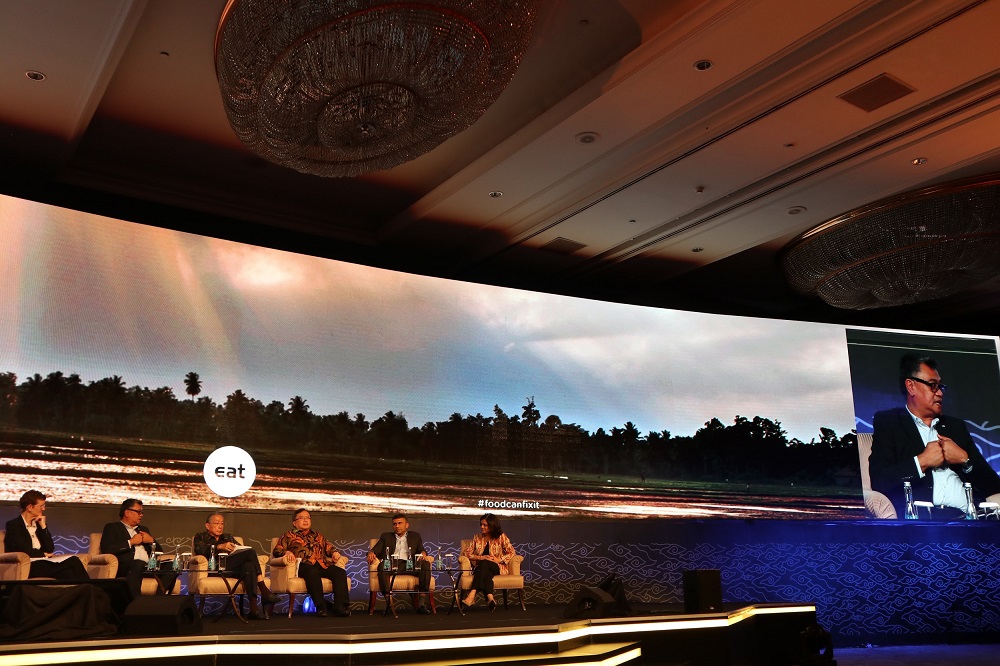
The next 15 years will be decisive for the health of both people and planet. While there are numerous existing international agreements around climate change, health, sustainability, and food security, most are not legally binding. There is a need for more action, implementation, transparency, and accountability - ingredients that can be supplied through the achievement of the United Nations’ 17 Sustainable Development Goals in the Asia-Pacific region.
“The beauty of the SDGs is that the goals themselves are intermittent and transformational,” says Anita Nirody, UN Resident Coordinator and UNDP Resident Representative for the Republic of Indonesia. “We say that they are transformational because advancing these goals will require a thinking that is out of the box, that synergizes across different policies. And once a member state signs up for one of these goals, move ahead towards implementation, and are successful, it will dramatically improve the lives of people, not just in our generation but in generations to come.”
The SDGs are just a part of the broader Agenda 2030, with the agenda acting as a house, and the SDGs as the various interconnected rooms that make up that house. And Dr. Julie Delforce, Senior Sector Specialist for Agricultural Development and Food Security of the Australian Department of Foreign Affairs and Trade, believes that food and agriculture are central to achieving all of the 17 SDGs. “Food and agriculture systems are in the middle of every SDG and focusing on them would make great sense. This strongly reinforces the need for governments and businesses to implement a food systems approach in order to fulfill the SDGs.”
Lastly, from an environmental standpoint, Joel Palma of WWF-Philippines agrees that sustainable consumption and production is the way to go. “We are very happy about the SDGs because the fundamental parameter that would solve every goal is basically making sure that the natural capital of the environment is being taken care of. After all, no water, no forests, no soil, means no food,” says Palma. “For me, out of the 17 SDGs, SDG 12 - Sustainable Consumption and Production, is one of the most important ones because it really pins down the essence of ensuring that all sectors - government, businesses, consumers - will do something about the problem of food security. At the end of the day, it would entail all of us working together in order to spread awareness about sustainability, especially in terms of food production and consumption, utilizing platforms such as digital and social media and engaging the youth in order to reach and educate a wider audience.”
“This is not only for the UN to do - it is everybody’s responsibility. We only have one planet. We all need to work together to fix our global food system. And as we say in WWF - when we work together, it is always possible to achieve our goals for a more sustainable and living planet.”
